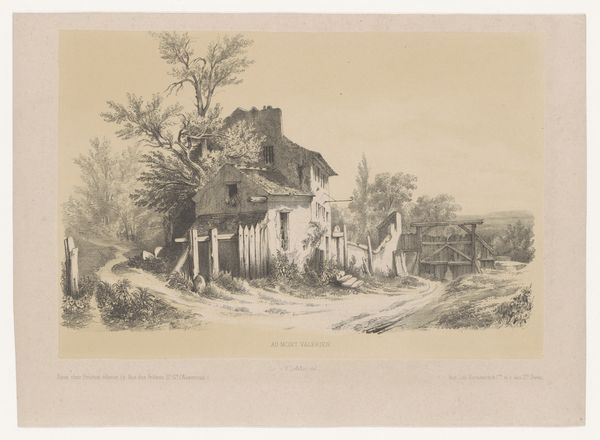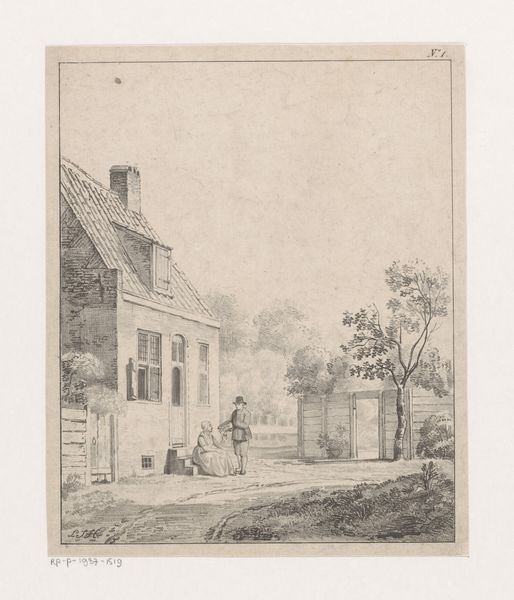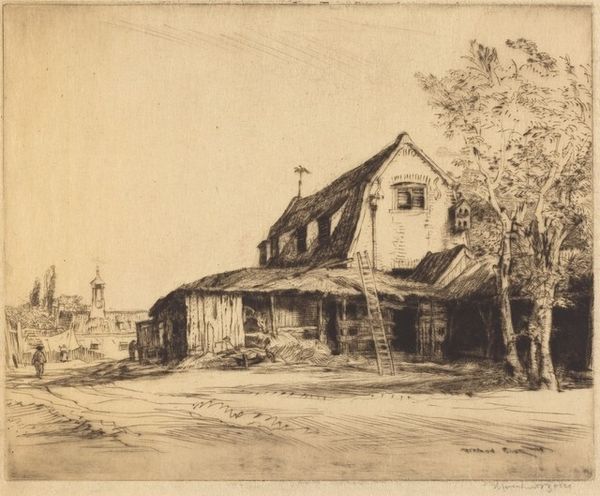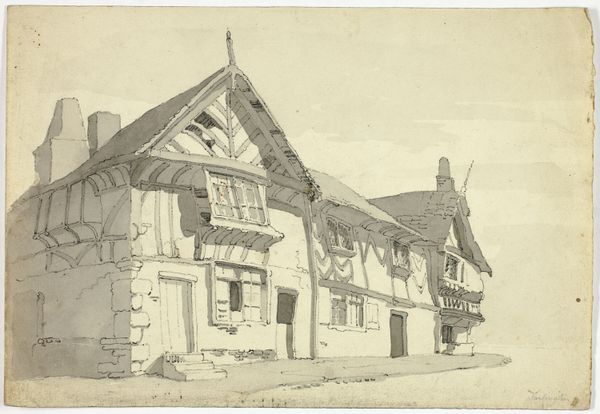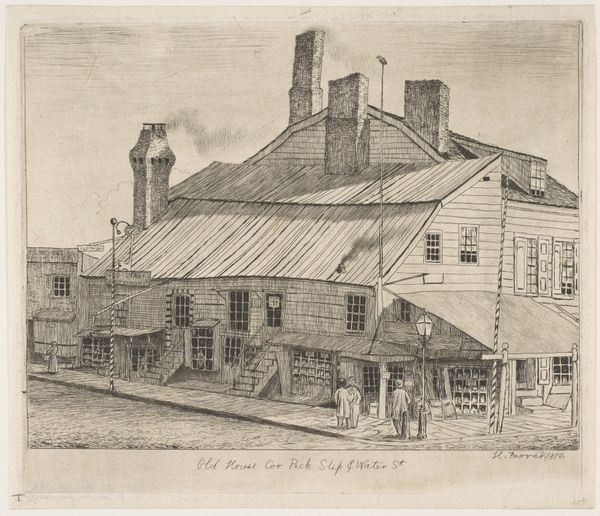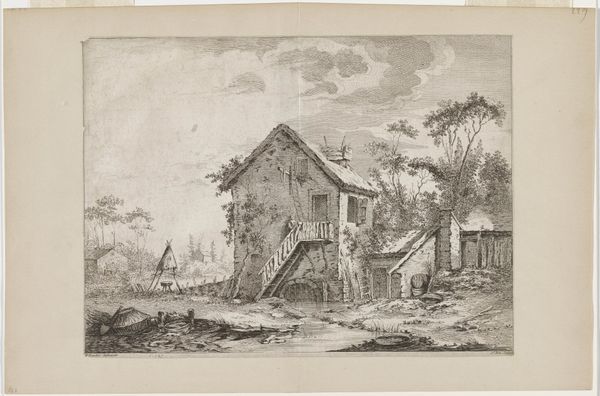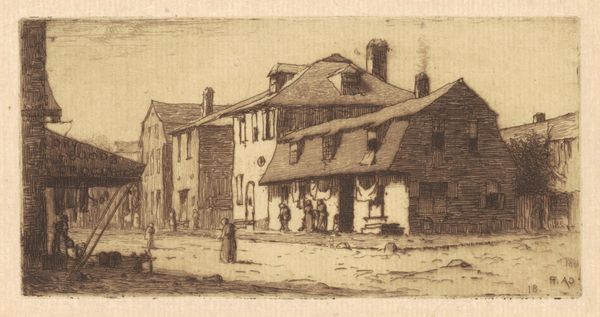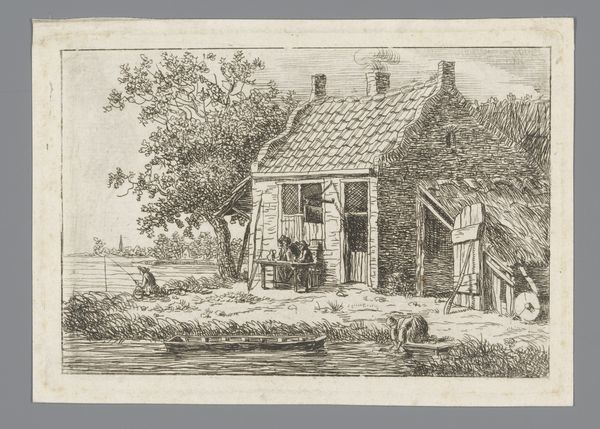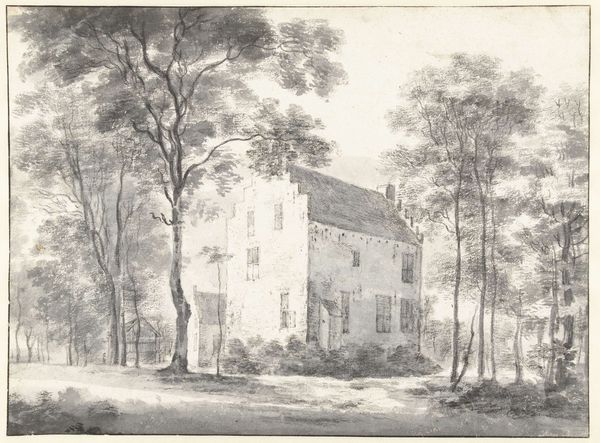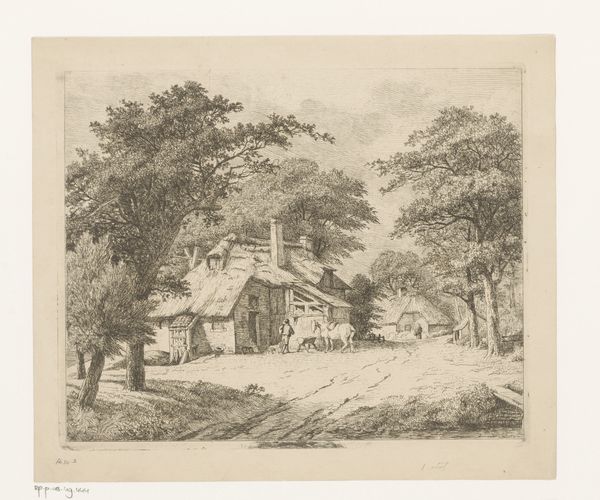
drawing, paper, ink, architecture
#
drawing
#
16_19th-century
#
landscape
#
paper
#
ink
#
genre-painting
#
architecture
Copyright: Public Domain
Curator: This ink and paper drawing is called "Village Forge" by Philipp Rumpf, currently held at the Städel Museum. What strikes you first about this image? Editor: I'm immediately drawn to the atmosphere. It feels quiet, almost dreamlike. The monochromatic palette adds to this sense of calm. Curator: Rumpf’s decision to depict such an ordinary scene within the genre-painting tradition reveals much about the artist's priorities. Instead of grand historical narratives, he seems invested in the quotidian. What narratives do you suppose this drawing suggests or silences? Editor: The forge, of course, is a prominent symbol of labour. It hints at the work involved in creating even the simplest tools. I wonder though, is Rumpf romanticizing labour or representing it as grueling? There is certainly no industrial chaos represented in the work. Curator: That’s a critical question. On one hand, Rumpf chooses a genre subject from what would have then been a burgeoning and exploitative economic context. Yet there’s something in his application of ink that communicates this in a gentrified format. It could also suggest that he wants the work to represent labor more broadly. It also omits some elements – notably the socioeconomic differences. Where would they be within that dynamic? Editor: Right, it is far from a full representation. Visually, the timber-framed architecture almost functions as a signifier for a specific cultural identity or place, maybe reinforcing notions of "folk" or regional identity during a period of nationalistic sentiment? The lack of sharp details contributes to a feeling that we are recalling it all through an old tale, further emphasizing themes of historical roots and identity. Curator: I’d add that by depicting only one scene he removes an argument from one historical specificity to more thematic trends. This brings us to consider labor today. We can understand what he shows but consider too what and who has been omitted in our vision. In this case, his decision highlights both how certain things continue today. The role of technology and gender. Editor: Seeing it through this lens encourages considering the impact these visual codes have in reflecting larger themes over time. Curator: Precisely, making us think of how these everyday spaces were and remain potent carriers of meaning, reflective of a wider social framework.
Comments
No comments
Be the first to comment and join the conversation on the ultimate creative platform.
